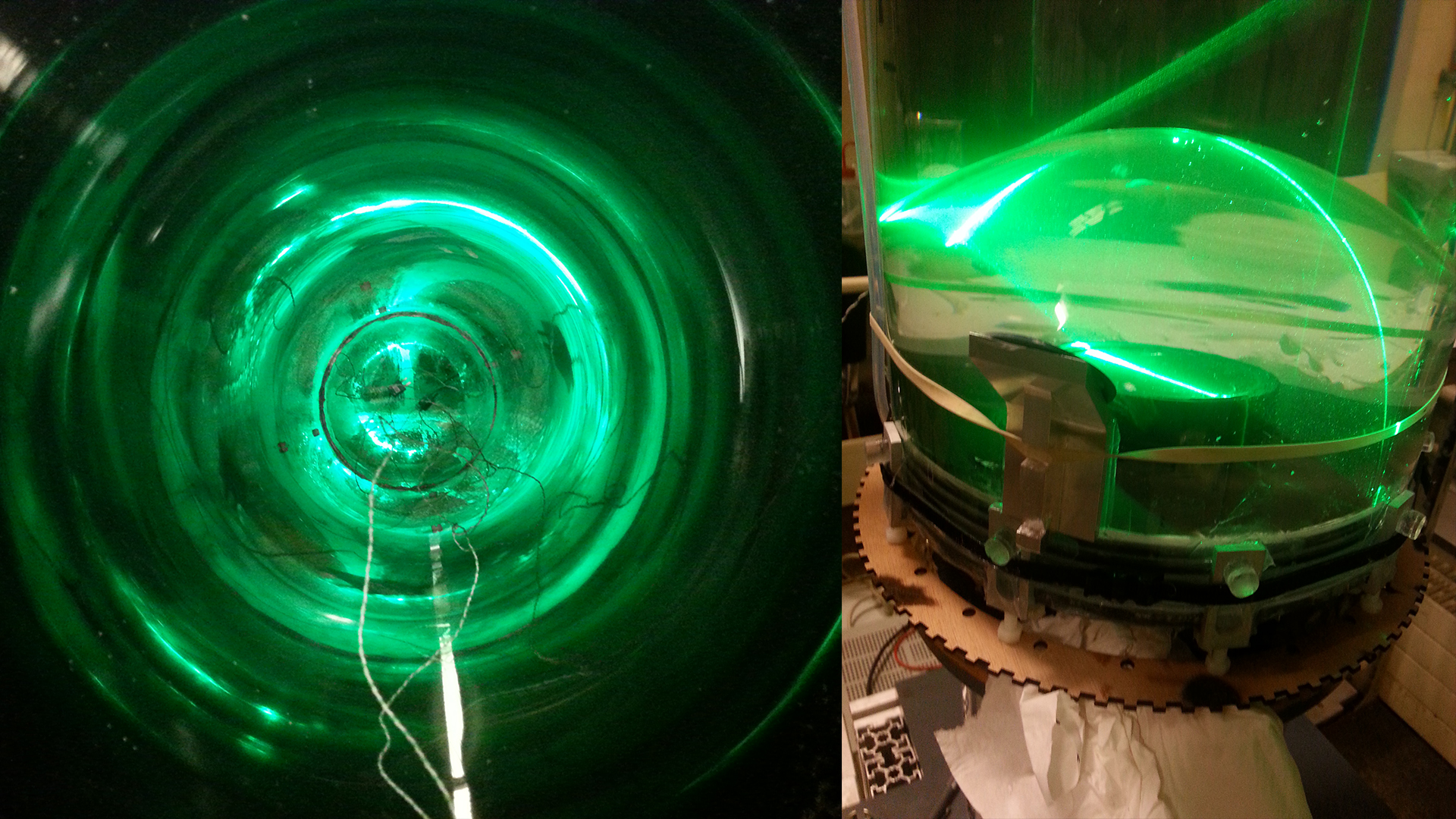The Earth’s magnetic field is why we are here today. It protects life from harmful radiation from the Sun and many other cosmic events. It is generated in the liquid outer core of our planet, but exactly how it emerges has been a matter of discussion. A new study brings forward a new view, one that was tested using one of the most powerful magnets on the planet.
At the center of the Earth is a solid hot core, and all around it there is a liquid outer core of molten metal. The inner core is so hot that it keeps the outer core liquid and the heat is moved around through convection, like a bubbling pot. But there is a major complication when it comes to the model: the pot is not flat-bottomed. It is a sphere, and it is rotating at an incredible speed.
The core is very complex, but it has been simplified by the Taylor-Proudman theorem. Basically, the rotational forces are so strong that in a cylinder above and below the inner core, you have a certain type of movement, and in the equatorial regions beyond the cylinder, the flow moves differently.
What we have to do is to put a model of the Earth filled with sulfuric acid inside that giant magnet and shine a laser through it and take some measurements.
Professor Alban Pothérat
Most important is the effect of the rotational force, known as the Coriolis force. This force appears in any rotating body and it is the reason why tropical cyclones spin one way in the Northern Hemisphere and the other in the Southern – and why they do not cross the equator. The Coriolis force in the core is millions of times greater than the viscous forces of the molten metal. It is basically a barrier, and no fluid can go in and out of the cylinder. But this is not what we measure.
“If you put a satellite in orbit, you can move around and get a little map of how the magnetic field of the Earth looks like and how it evolves in time, typically 10 years or something like that. From that, we can infer the flow inside the liquid core and it looks like this constraint that separates those two regions is not actually very well satisfied,” Professor Alban Pothérat, from Coventry University, told IFLScience.
The Taylor-Proudman theorem doesn’t include the magnetic force. The researchers suspected that not only does the motion of the molten metal create the magnetic field, but the magnetic field also shapes the motion in turn. The scenario is plausible, but testing it was a challenge.
They needed a liquid they could easily study the motion of, so it had to be transparent. It also needed to conduct electricity. The team used sulfuric acid at 30 percent concentration. The setup had to be put into a device that could rotate it and heat it inside a powerful magnet: the Little Earth Experiment, a device that can generate magnetic fields of over 10 Tesla, about 100 times stronger than the strongest natural magnet in the Solar System (sunspots).

The sulfuric acid Earth model from above and from the side, with the laser shining through.
Image credit: Pothérat et al./APS 2024
“What we have to do is to put a model of the Earth filled with sulfuric acid inside that giant magnet and shine a laser through it and take some measurements,” Professor Pothérat told IFLScience before explaining the peculiar observation.
“So mostly the fluid moves in rotation, which is what you’d expect for a convective flow. But what we also saw is that the fluid moves in from the top and out at the bottom of the cylinder. Now that’s interesting because if you stir your tea, it moves the other way around. That was not the normal teacup effect. And it also appeared that this movement was proportional to how strong the magnetic field was.”
The finding seems to violate the theory of rotating flows, but the team admits that in the real Earth with all its complications, the theory cannot hold. Just like in their experiment, the cylinder does not have an uncrossable boundary. There is flow going in and out.
The cylinder is believed to be very important in the generation of our planet’s magnetic field, so the flow of molten metal in and out will affect the magnetic field and also play a role in its generation.
“The next step is to try and extend the theory to account for more complex geometries and see how the flow inside would be affected and if it matches what we observe from the Earth,” Professor Pothérat told IFLScience.
The study is published in Physical Review Letters.
Source Link: Unexpected Metal Flow Challenges Theories Of How Earth's Magnetic Field Forms